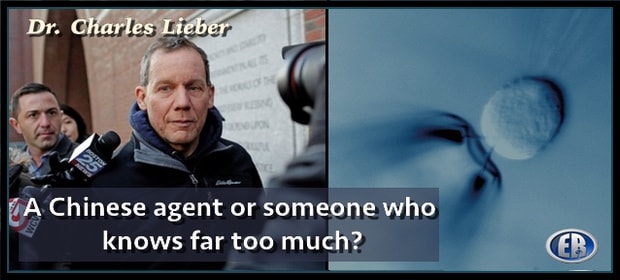
Around the same time, I noted another extremely strange coincidence that failed to attract any interest from our somnolent national media. Although his name had meant nothing to me, in late January my morning newspapers carried major stories on the sudden arrest of Prof. Charles Lieber, one of Harvard University’s top scientists and Chairman of its Chemistry Department, sometimes characterized as a potential future Nobel Laureate.
The circumstances of that case seemed utterly bizarre to me. Like numerous other prominent American academics, Lieber had had decades of close research ties with China, holding joint appointments and receiving substantial funding for his work. But now he was accused of financial reporting violations in the disclosure portions of his government grant applications—the most obscure sort of offense—and on the basis of those accusations, he was seized by the FBI in an early-morning raid on his suburban Lexington home and dragged off in shackles, potentially facing years of federal imprisonment.
Such government action against an academic seemed almost without precedent. During the height of the Cold War, numerous American scientists and technicians were rightfully accused of having stolen our nuclear weapons secrets for delivery to Stalin, yet I had never heard of any of them treated in so harsh a manner, let alone a scholar of Prof. Lieber’s stature, who was merely charged with technical disclosure violations. Indeed, this incident recalled accounts of NKVD raids during the Soviet purges of the 1930s.
Although Lieber was described as a chemistry professor, a few seconds of Googling revealed that some of his most important work had been in virology, including technology for the detection of viruses. So a massive and deadly new viral epidemic had broken out in China and almost simultaneously, a top American scholar with close Chinese ties and expertise in viruses was suddenly arrested by the federal government, yet no one in the media expressed any curiosity at a possible connection between these two events.
I think we can safely assume that Lieber’s arrest by the FBI had been prompted by the concurrent coronavirus epidemic, but anything more is mere speculation. Those now accusing China of having created the coronavirus might surely suggest that our intelligence agencies discovered that the Harvard professor had been personally involved with that deadly research. But I think a far more likely possibility is that Lieber began to wonder whether the epidemic in China might not be the result of an American biowarfare attack, and was perhaps a little too free in voicing his suspicions, thereby drawing the wrath of our national security establishment. Inflicting such extremely harsh treatment upon a top Harvard scientist would greatly intimidate all of his lesser colleagues elsewhere, who would surely now think twice before broaching certain controversial theories to any journalist.
The article below delves into the nature of Lieber’s work involving nanotechnology, namely nanowires, that can penetrate human cell membranes harmlessly to monitor the cells from within.
We issue a moderate-level MSM warning for the article below.
Chinese Agent Charles Lieber & His Virus Transmitters
Dr. Charles Lieber is a nano-scientist at Harvard University. He was recently charged by the American authorities for secretly being a Chinese agent. However, there is a mystery surrounding the nature of his work. It is said he was recruited for advanced research into nanowire-batteries. But investigation by GreatGameIndia has shown that Lieber was in fact working on virus transmitters that could penetrate cell membranes without affecting the intercellular functions, and even measure activities inside heart cells and muscle fibers.
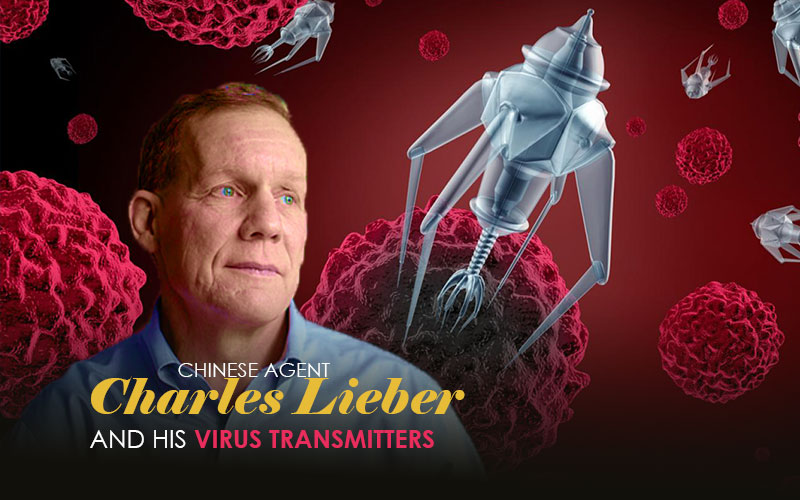
Chinese Agent Charles Lieber
Dr. Charles Lieber is a nano-scientist at Harvard University who also serves as a chair for Harvard’s Department of Chemistry and Chemical Biology. He was arrested by the U.S. Department of Defense in January for lying about his association with China’s Thousand Talents Program. It is basically a recruitment plan which seeks to lure Chinese overseas talent and foreign experts to bring their knowledge and experience to China and, in return, reward individuals for stealing proprietary information.

According to the charging documents, Lieber was a contractual participant of the program and was paid $50,000 monthly, along with $158,000 in living expenses and $1.74 million to set up a research lab at Wuhan University. The fact that Lieber kept his association with the Chinese a secret put his integrity in question, as well as financial conflicts of interest, including financial support from foreign governments or foreign entities.
Nanowire-Batteries – a Smokescreen?
What’s more concerning is that the affidavit released by the federal prosecutors states that Leiber signed an agreement between Harvard and Wuhan Insitute of Technology. According to the affidavit, the purpose of the agreement was to “carry out advanced research and development of nanowire-based lithium-ion batteries with high performance for electric vehicles.”
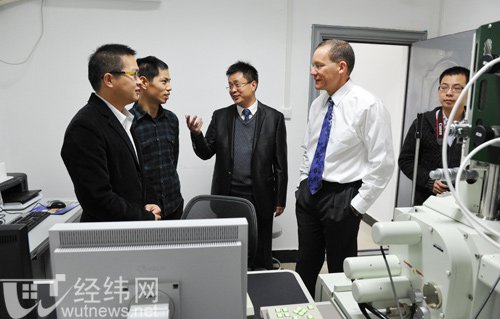
However, things don’t add up since the focus of Lieber’s research has never been about nanowire batteries. One nanoscientist and former student of Lieber’s says: “I have never seen Charlie working on batteries or nanowire batteries.” In fact, in all his research papers and patents, there is no mention of “batteries” or “vehicles”.
Although Lieber was released a day later on a $1 million bond, the question remains what exactly was the nature of Lieber’s research.
Lieber and his ‘Virus Transmitters’
Dr. Lieber joined Harvard in 1991. In his early days at the university, he made great strides in the field by growing nanowires in a flask. Researchers before Leiber were already creating wire-like structures with the help of semiconductors, metals and other materials. However, their approach would be quite expensive and would need clean-room facilities like the ones used by computer chip-makers.
In contrast, Lieber could create nanostructures using nothing but simple and inexpensive chemical techniques. He even went a step further to show how these nanowires could be used as transistors, complex logic circuits, data storage devices, and even sensors.

In 2001, Harvard Magazine published a report that discussed Lieber and his team’s research into what was termed as ‘Liquid Computing’. The report mentioned how Lieber was at the forefront solving silicon-based microelectronics industry’s greatest challenge – making silicon chips smaller and smaller.
Lieber noted that “continued shrinkage ultimately becomes problematic in terms of just how one achieves [it].” Instead, he created tiny logic circuits and memory – the two main components of a computer – using nanowires. And these circuits were really tiny, some of which just a few atoms across!
Ten years later, Lieber created a transistor so small it can be used to penetrate cell membranes and probe their interiors, without affecting the intercellular functions. The bio-compatible transistor – the size of a virus – can not only measure activities inside a neuron but also heart cells and muscle fibers.
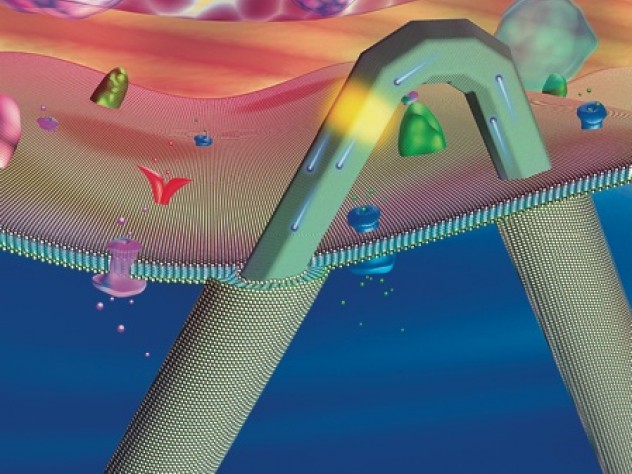
In 2017, Lieber and his team successfully created flexible 3D nanowire mesh that can be injected into the brain or retina of an animal, attach itself to the neurons and monitor electrical signals between the cells.
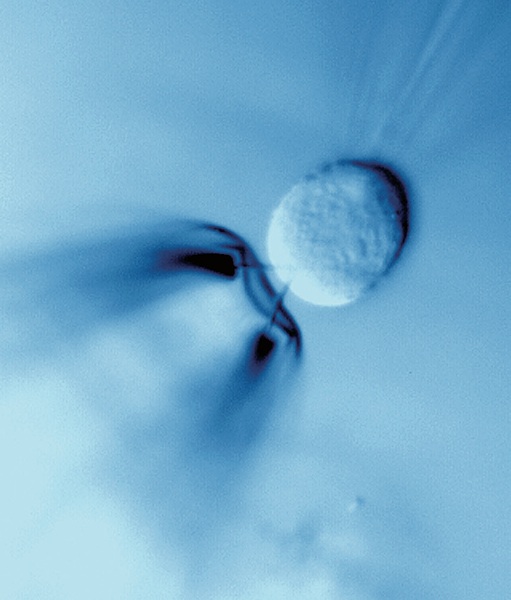
It’s no surprise the Chinese officials were quick to get him onboard considering he’s the brightest brain when it comes to nanotechnology. Not only his research would have made China an important player in this futuristic technology, but it would also be a be a step forward towards China’s stated goal of Biological Dominance.
Nanotech in the Battlefield
The importance of nanotechnology in advanced warfare can be understood from the fact that the United States’ Department of Defense (DoD) is one of the largest supporters of nanotechnology research. They have funded hundreds of millions of dollars into various research related to nanoelectronics and nanomaterials.
The technology could help create nanosensors and nanocoatings that military could use to protect soldiers against chemical and biological attacks. The fact that nanosensors can detect microscopic quantities of chemicals means it can be used as an effective early warning system against chemical warfare agents such as nerve agents and blood agents.
One can see why Charles Lieber’s secret association with the Chinese institutes and universities and his expertise in nanotechnology could pose a serious threat. Lieber lied about his involvement with the Thousand Talents Plan and affiliation with the Wuhan Institute of Technology and that makes him no less than a Chinese biowarfare agent.
************
Original article

••••
The Liberty Beacon Project is now expanding at a near exponential rate, and for this we are grateful and excited! But we must also be practical. For 7 years we have not asked for any donations, and have built this project with our own funds as we grew. We are now experiencing ever increasing growing pains due to the large number of websites and projects we represent. So we have just installed donation buttons on our websites and ask that you consider this when you visit them. Nothing is too small. We thank you for all your support and your considerations … (TLB)
••••
Comment Policy: As a privately owned web site, we reserve the right to remove comments that contain spam, advertising, vulgarity, threats of violence, racism, or personal/abusive attacks on other users. This also applies to trolling, the use of more than one alias, or just intentional mischief. Enforcement of this policy is at the discretion of this websites administrators. Repeat offenders may be blocked or permanently banned without prior warning.
••••
Disclaimer: TLB websites contain copyrighted material the use of which has not always been specifically authorized by the copyright owner. We are making such material available to our readers under the provisions of “fair use” in an effort to advance a better understanding of political, health, economic and social issues. The material on this site is distributed without profit to those who have expressed a prior interest in receiving it for research and educational purposes. If you wish to use copyrighted material for purposes other than “fair use” you must request permission from the copyright owner.
••••
Disclaimer: The information and opinions shared are for informational purposes only including, but not limited to, text, graphics, images and other material are not intended as medical advice or instruction. Nothing mentioned is intended to be a substitute for professional medical advice, diagnosis or treatment.




